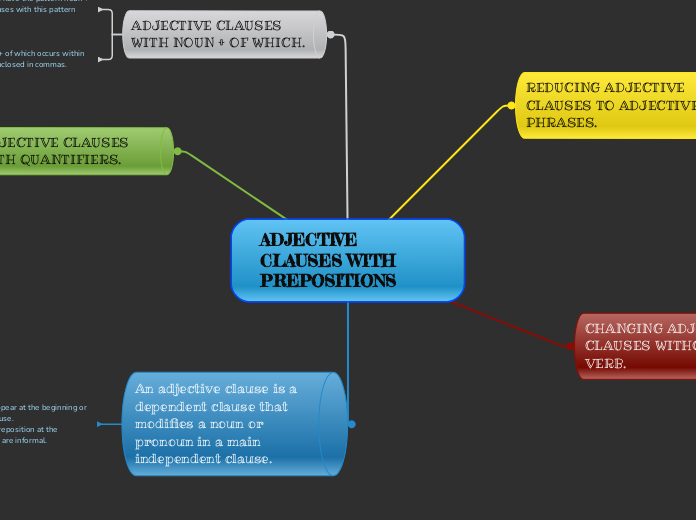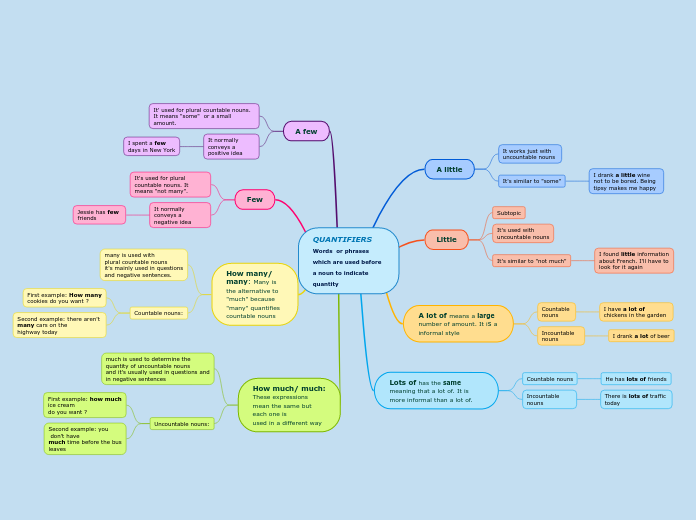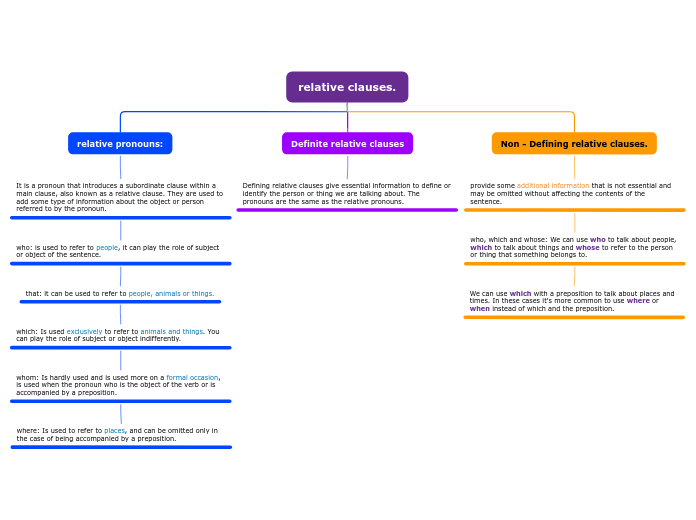por MADELYN YAMILETH PEREZ MELENDEZ 1 ano atrás
283
ADJECTIVE CLAUSES WITH PREPOSITIONS
The text discusses different structures and transformations of adjective clauses in English grammar. It explains how to use quantifiers with relative pronouns in adjective clauses, providing examples to illustrate how these clauses can refer to people or things.









